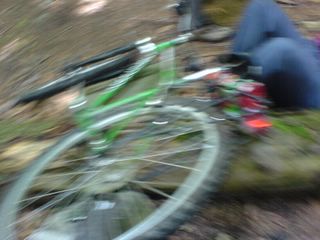And to round off the week's reading I've finally finished The Decameron of Giovanni Boccaccio. I've been gnawing through it steadily for a couple of months and just closed the cover. It's a hefty tome, 100 ribald stories wrapped in a substantial layer of delicious literary filo dough.
The Decameron was written in the 14th century, shortly after the plague decimated Europe and about 50 years before the beginning of the Italian Renaissance. Boccaccio was a native of Florence and followed his compatriot Dante's lead in writing the Decameron in the Florentine dialect rather than Latin.
It's fitting that he used the vulgar tongue, as these stories are not for the refined. Unlike Dante, Boccacio didn't write a religious fable. He wrote about the real world. These are sexy, scandalous anecdotes in which wives cuckold husbands, friends play each other nasty personal tricks, and everyone in the end gets what they deserve.
The Decameron is a major Western classic and probably served as an inspiration for Chaucer in writing The Canterbury Tales, which echoes its structure. Chaucer's stories are told by pilgrims; Boccaccio's tales have a darker setting. His narrators are ten young men and women who have fled Florence because of the plague.
The Decameron begins with a vivid description of the total breakdown induced by the plague.
"A great many breathed their last in the public streets, day and night; a large number perished in their homes, and it was only by the stench of their decaying bodies that they proclaimed their death to their neighbours. Everywhere the city was teeming with corpses.... They would drag the corpses out of their homes and pile them in front of the doors, where often, of a morning, countless bodies might be seen..... Huge trenches were dug in the crowded churchyards and the new dead were piled in them, layer upon layer, like merchandise in the hold of a ship.... it is estimated that over one hundred thousand human beings lost their lives within the walls of Florence.... Who would have thought before the plague that the city had so many inhabitants?"
It's against this backdrop that the scandalously light-hearted tales, ten on each day for ten days, are told.
This is the stuff that cultures are made of.
An edition with footnotes explaining some of the historical references would be an important aid to those without an in-depth familiarity with medieval Italian history.
I loved reading these stories. I lived in Florence for many years (and I agree with Boccacio that it is 'most beautiful of Italian cities'). There are some landmarks that Boccacio uses that I am familiar with, such as the church where the youths make their plans, Santa Maria Novella. Nowadays it's right next to the train station.
My knowledge of Italian also let me enjoy some delicious puns; for example, 'Boccaccio' means 'nasty (or dirty) mouth'.
But anyone would enjoy them, just like anyone can enjoy reading Arabian Nights. I was really surprised that few of the people I mentioned The Decameron to knew what it was. I guess it's not really part of the literary canon in modern American education. It's too racy to include in any high school curriculum. You don't know what you're missing, you heathenish ignorant Americans. Oh wait, I'm American. And I hadn't read it either. Never mind.
Subscribe to:
Post Comments (Atom)

No comments:
Post a Comment